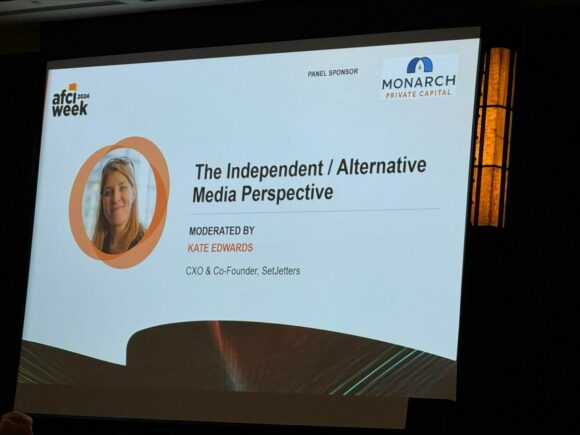Hollywood at a Crossroads: Tariffs, Tax Credits, and the Future of U.S. Film Production
By: Marman (Marco) Cordova, CPA
For over a century, Hollywood has been synonymous with cinematic excellence, cultural influence, and economic power. But in recent years, the American film industry has faced a series of compounding challenges that have shaken its foundations. From the rise of global streaming platforms to labor unrest and natural disasters, the landscape of film production in the United States is undergoing a seismic shift. Now, with the Trump administration’s proposed tariffs on foreign-produced content and the ongoing debate over federal tax incentives, the stakes have never been higher.
The Erosion of Traditional Revenue Streams
The decline of Hollywood’s traditional revenue model began long before the pandemic. Streaming platforms such as Netflix, Apple TV+, and Disney+ have fundamentally altered consumer behavior, drawing audiences away from theaters and cable networks. While these platforms have created new opportunities for content creators, they’ve also disrupted the advertising ecosystem that once sustained studios and networks.
The COVID-19 pandemic accelerated this trend, shuttering theaters and halting productions. In its wake, Hollywood faced a wave of union strikes, including high-profile actions by the Writers Guild of America (WGA) and the Screen Actors Guild‐American Federation of Television and Radio Artists (SAG-AFTRA). These labor disputes, driven by demands for fair compensation in the streaming era, led to increased production costs and prolonged delays.
Compounding these issues were the devastating wildfires that swept through Los Angeles and surrounding areas, damaging infrastructure and further complicating production logistics. The cumulative effect has been a contraction in domestic film production and a growing reliance on international locations offering more favorable economic conditions.
Rising Costs and the Global Incentive Race
Producing films in the United States has become increasingly expensive. Elevated labor costs, stringent union regulations, and the strength of the U.S. dollar have made domestic production less attractive compared to international alternatives. Countries like Canada, the United Kingdom, and Australia have capitalized on this by offering generous tax credits, grants, and rebates to lure American filmmakers abroad.
These incentives are not trivial. In Canada, for example, the federal and provincial governments offer combined tax credits that can exceed 30% of eligible production costs. This is in addition to any provincial tax credits. The U.K. provides a 25% cash rebate on qualifying expenditures, while Australia’s Location Offset offers a 30% rebate, with additional bonuses for high-budget productions. These programs have proven effective in attracting major Hollywood blockbusters, television series, and streaming originals.
In contrast, the United States lacks a unified federal incentive program. While many states offer their own tax credits—such as Georgia’s 20–30% transferable film tax credit and New York’s 30% refundable tax credit—these are often insufficient to offset the broader cost disadvantages of filming domestically. The absence of a national strategy has left the U.S. at a competitive disadvantage in the global production marketplace.
Tariffs on Foreign-Made Films: A New Frontier in Trade Policy
In May 2025, President Donald Trump announced a controversial proposal to impose a 100% tariff on all films produced outside the United States. Framed as a measure to protect American jobs and revitalize a “dying” Hollywood, the tariff targets creative content rather than physical goods—a significant departure from traditional trade policy.
Unlike tariffs on manufactured products such as microchips or textiles, applying duties to intangible goods like films presents complex legal and logistical challenges. Content is often produced across multiple countries, with filming, editing, and post-production occurring in different jurisdictions. Determining the “origin” of a film for tariff purposes would require new compliance frameworks, extensive record-keeping, and potentially intrusive audits.
Commerce Secretary Howard Lutnick has indicated that regulatory action is imminent, though details remain sparse. The proposed tariff would apply globally, affecting any film produced outside the U.S., regardless of its funding source or distribution platform. This raises critical questions: Will streaming platforms like Netflix and Disney+ be required to pay tariffs on foreign-produced content? Will user-generated platforms such as YouTube and TikTok face new compliance burdens? What about commercials, live sports broadcasts, or video games developed overseas?
The implications extend beyond the entertainment industry. If implemented, the tariff could set a precedent for taxing other forms of digital content and services, potentially affecting advertising, marketing, and software development. It also risks triggering retaliatory measures from trading partners, further complicating international relations.
Compliance Challenges for Media Companies
For traditional media companies, the proposed tariff introduces a host of compliance challenges. Studios and distributors would need to meticulously track the geographic origin of every aspect of production—from principal photography to sound mixing and visual effects. While some of this data is already collected for tax credit purposes, the level of granularity required for tariff compliance would be unprecedented.
Streaming platforms, which often operate globally and source content from diverse regions, would face even greater hurdles. Services like Viki and iQiyi, which specialize in international content, could see their business models disrupted. Smaller platforms may lack the resources to implement sophisticated tracking systems, potentially forcing them to curtail foreign acquisitions or pass costs onto consumers.
Moreover, the tariff’s impact on subscription pricing remains unclear. If content providers are forced to pay duties on foreign-produced material, will those costs be absorbed or passed on to end users? Will consumers see higher prices for streaming services, or will platforms reduce their international offerings to avoid penalties?
The Case for a Federal Tax Incentive Program
While the tariff proposal has dominated headlines, there is a growing movement advocating for a federal tax credit to incentivize domestic film production. Proponents argue that such a program would create jobs, stimulate local economies, and preserve America’s cultural influence in the global media landscape.
However, political and fiscal realities pose significant obstacles. The federal government is under pressure to reduce the national deficit, and the GOP-controlled Senate Finance Committee has shown little appetite for new spending initiatives. Crafting legislation that balances economic stimulus with fiscal responsibility will require bipartisan cooperation and careful policy design.
During the Cannes Film Festival in May 2025, I had the opportunity to moderate a panel discussion in partnership with Film USA, focusing on the need for a U.S. Film Commission and a national incentive strategy. The discussion highlighted the fact that the United States is the only major Western country without a federal tax credit, grant, or rebate for film production. While state-level programs exist, they are often fragmented, inconsistent, and insufficient to compete with international offerings.
Establishing a federal incentive program would not only level the playing field but also signal a commitment to preserving the domestic film industry. It could be structured to reward productions that meet specific criteria—such as hiring local talent, using union labor, or filming in economically disadvantaged areas—thereby aligning with broader policy goals.
Looking Ahead: Policy, Politics, and Possibility
The future of U.S. film production hinges on a delicate interplay of economic, political, and cultural factors. The proposed tariff on foreign-made films represents a bold, if controversial, attempt to reshape the industry. Yet its practical implementation remains uncertain, and its potential consequences—both intended and unintended—are vast.
Conversely, the push for a federal tax incentive program offers a more constructive path forward, though it faces significant legislative hurdles. In the absence of federal support, states will continue to compete for productions, but the lack of coordination may limit their effectiveness.
Ultimately, revitalizing Hollywood will require more than protectionist policies or piecemeal incentives. It will demand a comprehensive strategy that embraces innovation, supports creative talent, and fosters collaboration across public and private sectors. Whether that vision materializes under the current administration or a future one remains to be seen.
As we navigate this complex terrain, it’s essential for stakeholders—filmmakers, policymakers, tax professionals, and audiences—to engage in thoughtful dialogue. The decisions made today will shape the stories we tell tomorrow, and the cultural legacy we leave behind.
Related Posts

AFCI Week 2024
Aug 27, 2024
Monarch Private Capital was proud panel sponsor at AFCI | Association of Film Commissioners International Week 2024! We were excited to support and sponsor the “Independent/Alternative Media Perspective” panel today, […]

Lights. Camera. America! Panel – Monarch Private Capital & Film USA Panel During Sundance 2025
Feb 4, 2025
We are pleased to present the full recording of our “Lights. Camera. America!” panel discussion, an event that took place during the 2025 Sundance Film Festival. This timely conversation addresses […]

Film Financing with Debt and Tax Credits
Feb 16, 2019
Excerpt from Forbes article by Schuyler Moore State Tax Credits One important source of gap financing is the use of state tax credits for film production. These state tax credits […]